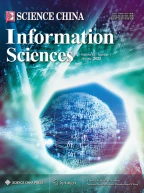Abstract
Inspired by biological immune system, a new dynamic detection model for computer virus based on immune system is proposed. The quantitative description of the model is given. The problem of dynamic description for self and nonself in a computer virus immune system is solved, which reduces the size of self set. The new concept of dynamic tolerance, as well as the new mechanisms of gene evolution and gene coding for immature detectors is presented, improving the generating efficiency of mature detectors, reducing the false-negative and false-positive rates. Therefore, the difficult problem, in which the detector training cost is exponentially related to the size of self-set in a traditional computer immune system, is thus overcome. The theory analysis and experimental results show that the proposed model has better time efficiency and detecting ability than the classic model ARTIS.
Similar content being viewed by others
References
Staniford S, Paxson V, Weaver N. How to own the internet in your spare time. In: Boneh D, ed. Proc of the 11th USENIX Security Symposium. New York: ACM Press, 2002. 149–167
Butler D. Computer security: who’s been looking at your data? Nature, 2002, 418: 580–582
Albert R, Jeong H, Barabasi A L. Attack and error tolerance of complex networks. Nature, 2002, 406: 378–382
Lloyd A L, May R M. How viruses spread among computers and people. Science, 2002, 292: 1316–1317
Balthrop J, Forrest S, Newman M E J, et al. Technological networks and the spread of computer viruses. Science, 2004, 304(5670): 527–529
Li T. Computer Immunology (in Chinese). Beijing: Publishing House of Electronics Industry, 2004. 49–65
Klarreich E. Inspired by Immunity. Nature, 2002, 415: 468–470
Kalyani J, Kahlon K S, Singh H, et al. Analysis of virus algorithms. Comput Sci, 2006, 2(10): 785–788
Dipankar D. Special issue on artificial immune systems. IEEE Trans Evolut Comput, 2002.6, 6(3): 239–251
Glickman M, Balthrop J, Forrest S. A machine learning evaluation of an artificial immune system. Evolut Comput, 2005, 13(2): 179–212
Cheng S L, Tan R, Xong W L, et al. Computer Virus and its Protection Techniques (in Chinese). Beijing: Tsinghua University Press, 2004. 68–79
Kephart J O, Arnold W C. Automatic extraction of computer virus signatures. In: Ford R, ed. Proc of the Fourth International Virus Bulletin Conference. England: Abingdon Publishing, 2001. 178–184
Baldwin J M. A new factor in evolution. Am Nat, 1896, 30: 441–451
D’haeseleer P, Forrest S. An immunological approach to change detection: algorithm, analysis and implication. In: Needham R, David A, eds. Proc. of IEEE Symposium on Research in Security and Privacy. Oakland: IEEE Computer Society Press, 1996. 110–119
Sheng J, Xie S Q. The Theory of Probability and Mathematical Statistics (in Chinese). Beijing: High Education Publishing House, 1989. 86–92
Perelson A S, Weisbuch G. Immunology for physicists. Rev Mod Phys, 1997, 69(4): 1219–1263
Forrest S, Perelson A S. Self-nonself discrimination in a computer. In: Steven M, Abadi M, eds. Proc. of IEEE Symposium on Security and Privacy. Oakland: Proc of IEEE Computer Society Press, 1994. 202–221
Pu J, Ji J F, Yi L Z, et al. User Manual for MATLAB Version 6.0 (in Chinese). Shanghai: Pudong Electronics Publishing House, 2002
Author information
Authors and Affiliations
Corresponding author
Additional information
Supported by the National Natural Science Foundation of China (Grant No. 60573130), and the 863 Project of China (Grant No. 2006AA01Z435)
Rights and permissions
About this article
Cite this article
Li, T. Dynamic detection for computer virus based on immune system. Sci. China Ser. F-Inf. Sci. 51, 1475–1486 (2008). https://doi.org/10.1007/s11432-008-0125-y
Received:
Accepted:
Published:
Issue Date:
DOI: https://doi.org/10.1007/s11432-008-0125-y
